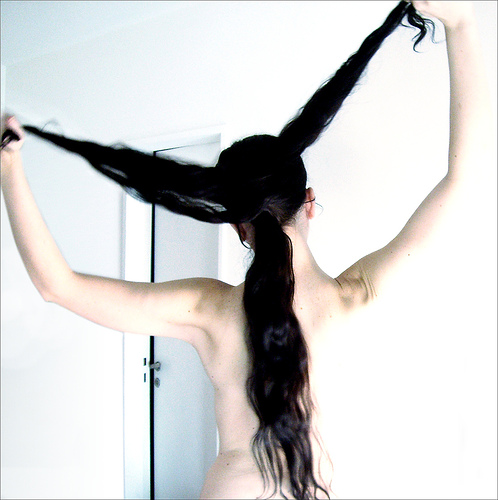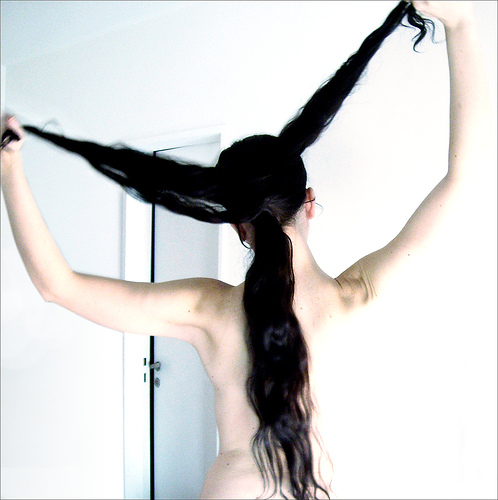Send your question to Umbra!
Q. Dear Umbra,
What’s the deal with dry shampoo? Isn’t it sort of just Febreze for the hair? Does it really do more than cover the scent of dirty locks?
Thanks!
Shirley Cohen
 Hair and now.Photo: Gisela GiardinoA. Dearest Shirley,
Hair and now.Photo: Gisela GiardinoA. Dearest Shirley,
Well, if it isn’t Hair Month. From composting dyed tresses to your question, people seem to have locks on the brain lately. Next I’ll tackle whether discarded mustache clippings can be used as an alternative fuel source. (Or … not.)
Dry shampoo is a bit of a mystery. Another Grist staffer and I were happy to see your question, as it gives me an excuse to investigate the tangled truth about it. First, dry shampoo mainly comes it powder or aerosol forms, and as one might expect, it’s touted as a waterless way to soak up hair’s excess oils when you don’t have time to hop in the shower. (It also goes by the less-appealing, late-night infomercial name “shampowder.”) You rub it into your scalp and roots, briefly let it do its thang, and brush out the residue, supposedly with temporarily rejuvenated hair. Though dry shampoos became the “it” hair product recently, they’ve actually been around since the ’70s. Why is this no surprise? One can instantly see their Woodstockian appeal!
Much like traditional wet shampoos, dry shampoos can have any sort of dubious ingredients, and you can easily make your own instead. Tresemme’s version includes things like aluminum starch octenylsuccinate — a neurotoxin that gets a “high hazard” rating from the Cosmetic Safety Database — and the ever-nebulous “fragrance.” Even “green” options like one vegan, paraben-free, and phthalate-free dry shampoo can contain the nasty aluminum starch octenylsuccinate. Moral of the story? Read the ingredients and check the Cosmetic Safety Database.
Or just DIY — word on the street is that baby powder might work better anyway. In the words of one dissatisfied dry-shamp user: “I’ve used an expensive powder-based ‘hair freshener’ but cornstarch-based baby powder is just as effective, though both products tend to remove any shine and leave a slight residue … I’m going to stick with using powder — it’s effective, cheaper, and easier to control how much I use and where it goes.” (Slate’s Double X reviewed three dry shampoos, with similar complaints about residue, as well as odd granny-perfume scents from some.)
To make your own, mix one cup ground oatmeal with one cup baking soda, rub into your roots, and then comb it out (or check out other dry shampoo recipes you can make from ingredients in your kitchen). And there’s always the No-‘Poo movement if you want to ditch shampoo, wet or dry, altogether!
Dryly,
Umbra



